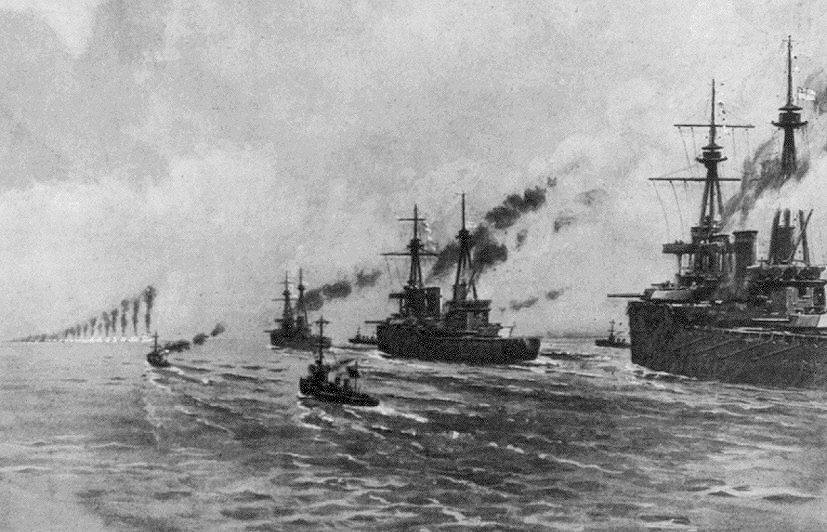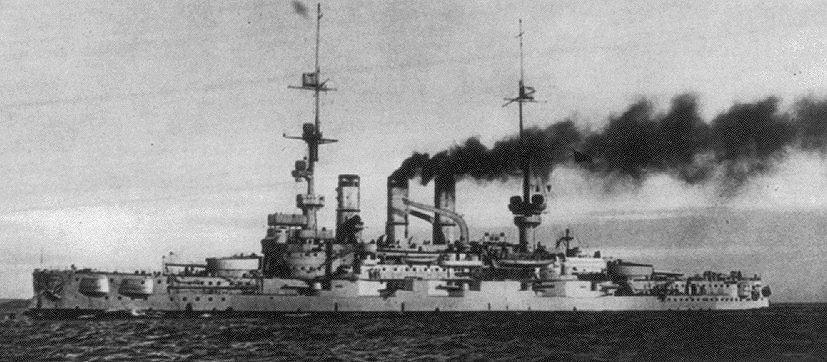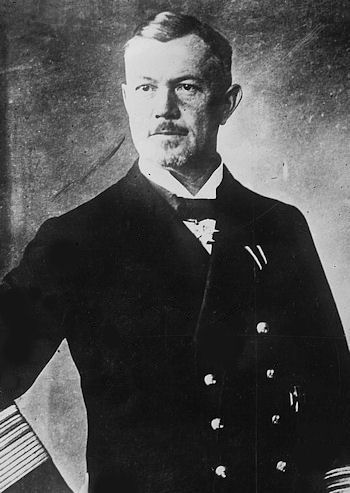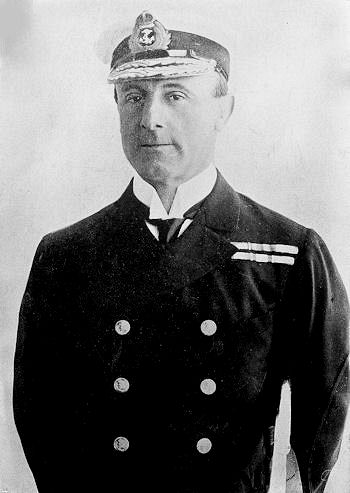

| Illustrated London News depiction from 1916 showing the British Grand Fleet (in the foreground) and its first sight of the German High Seas Fleet during the Battle of Jutland. Three British battle-cruisers, accompanied by destroyers, advance toward the German battle formation in the first stage of the battle. As the battle unfolded, misty weather and calm seas made the German ships difficult to pin down in an era before the existence of radar. Below: A photo of the pre-dreadnaught German battleship Pommern which was sunk by the British during the battle. |

| Below: The Opposing Admirals. On the left is Germany's Admiral Reinhard von Scheer who wanted to break British control of the North Sea to end the British-imposed naval blockade which severely undermined Germany's entire war economy by cutting off all sea imports. On the right is Britain's Admiral John Jellicoe who had put to sea on the evening of May 30, 1916, to confront Von Sheer, based on British analysis of German Morse code radio transmissions indicating the entire German High Seas Fleet was moving into the North Sea from its home ports. After the battle, Von Sheer and his High Seas Fleet chose not to venture out again to fight Jellicoe in the North Sea. But in the newspapers, a second Battle of Jutland of sorts unfolded as German and British officials, including Jellicoe himself, provided repeated press statements describing the battle scenario, only to read vigorous counter-claims each time. This back-and-forth in the press lasted for several weeks until other events in the war captured the world's attention. |


Return to World War I Timeline - 1916
The History Place - World War I Index Page
The History Place Main Index Page
Copyright © 2009 The History Place™ All Rights Reserved
Terms of use: Private home/school non-commercial, non-Internet re-usage only is allowed of any text, graphics, photos, audio clips, other electronic files or materials from The History Place.